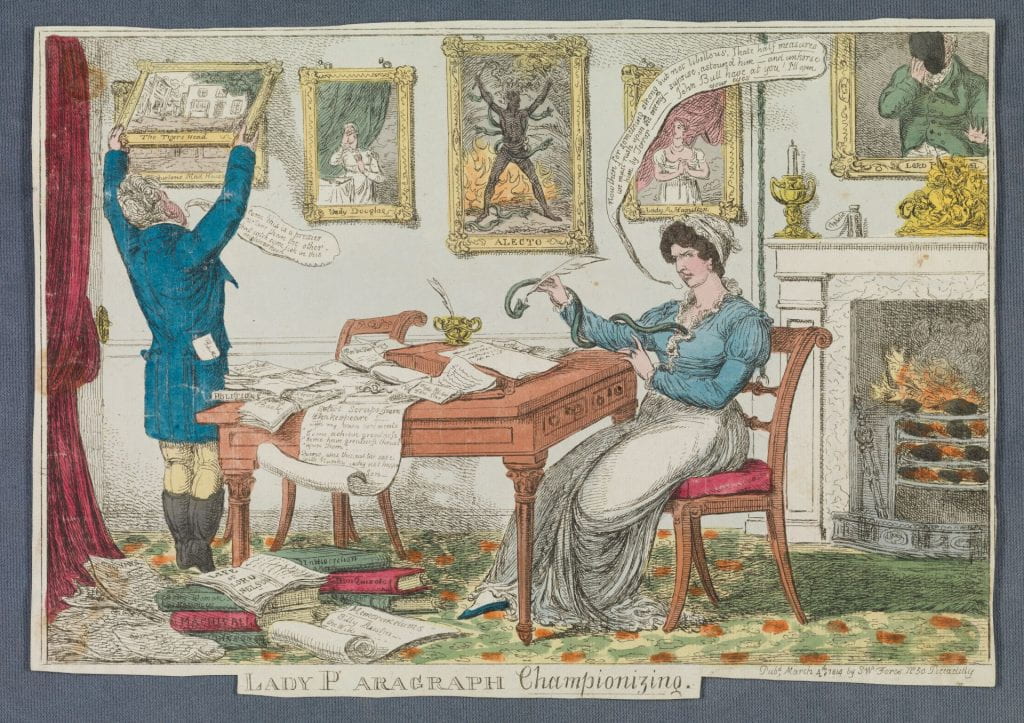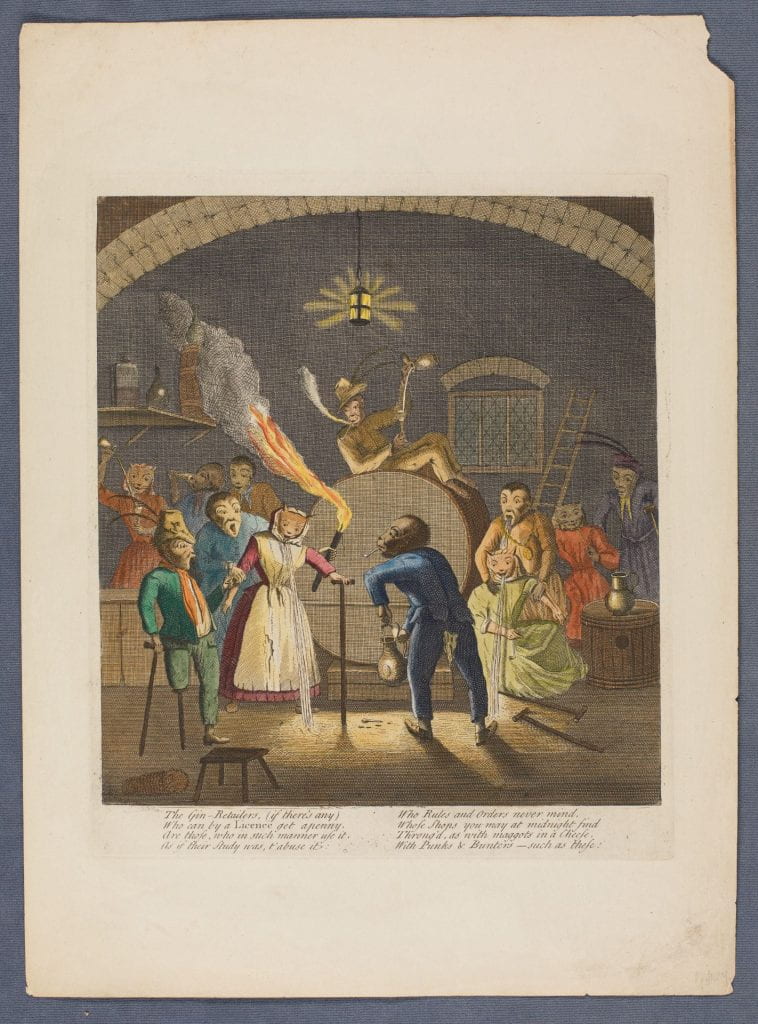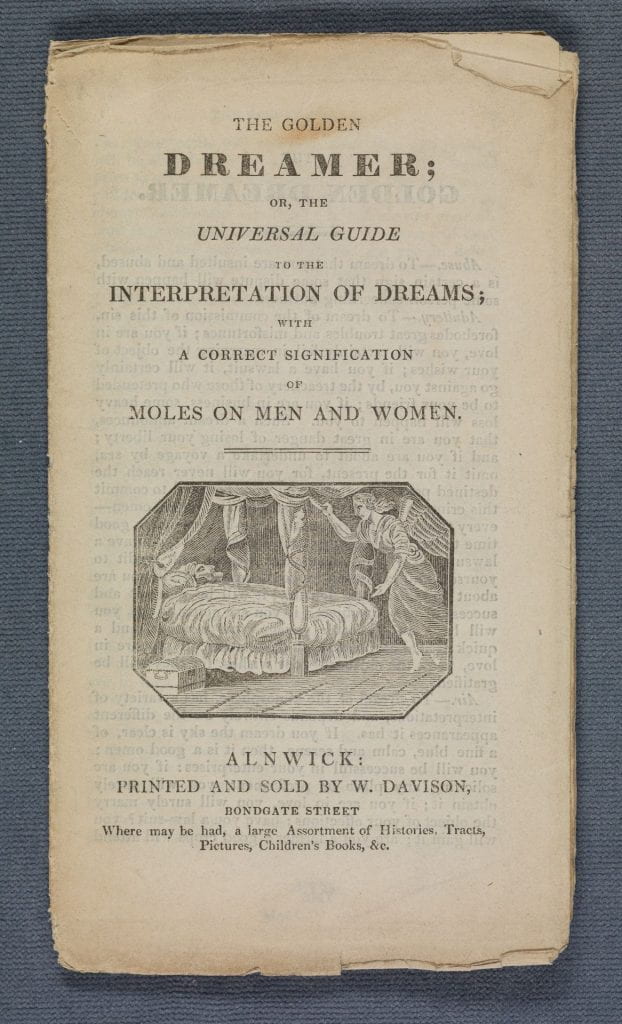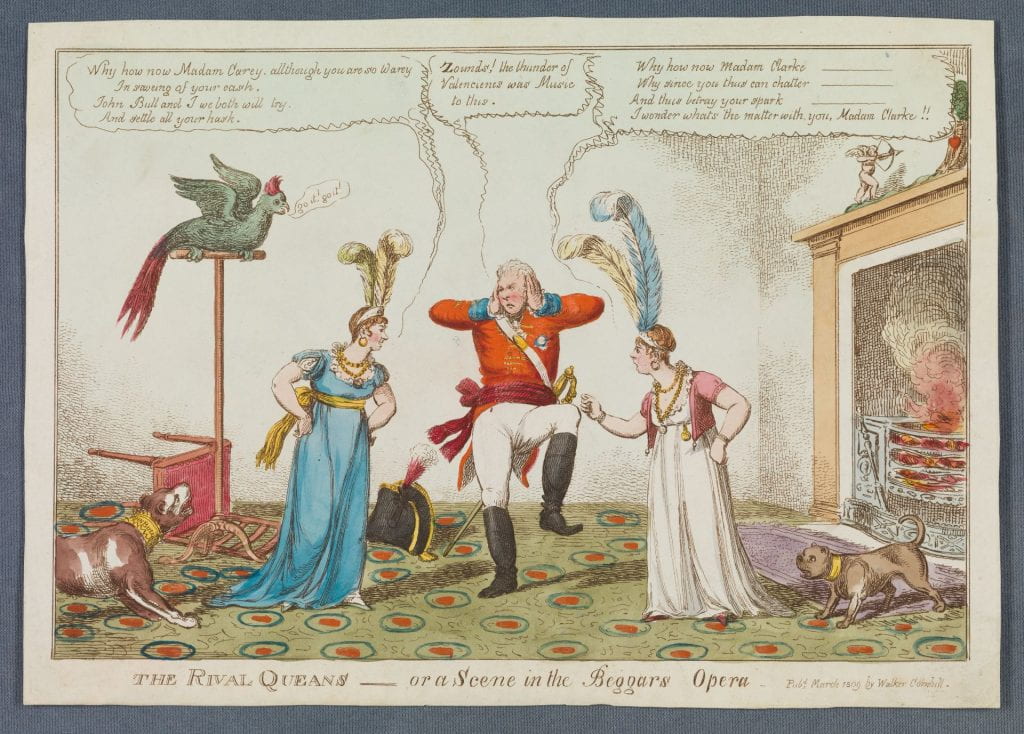
“Lady Perceval sits at an ornate writing-table, pen in hand. A serpent issues from her breast, coils round her arm, and darts its fang at the tip of her pen. She frowns meditatively, saying, “Now then for something strong but not libellous, I hate half measures we must rush upon the enemy–suprise [sic], astound him–and unhorse him by Terror–John Bull have at you! I’ll open your eyes–.” The table is littered with papers and books; some are docketed: ‘For the Star’, ‘To the Editor of the Star’, ‘For the News’, ‘Extracts from the Book’, one is ‘Copy’, a book is ‘Politicks’, and a large paper is displayed: ‘Select Scraps from Shakespeare–with my own comments “Some achieve greatness “some have greatness thrust upon them …. Querie was this not the case with Nunky [Spencer Perceval], why not happen …. Son–.’ Other papers and books lie on the floor: newspapers are ‘The News’ and ‘The Star’, a paper is headed ‘Memorandums Billy Austin [see British Museum Satires No. 12027]–the Will–‘ Books are ‘Life of Lord Nelson’, ‘A very Woman by Massinger’, ‘Machiavael’, ‘Johnson’, ‘Indiscretion a Novel’, ‘Don Quixote’. On the left John Mitford, identified by a letter in his coat-pocket ‘To John Mit–‘, stands facing the wall, and hanging one picture over another: he places a view of a country inn, ‘The Tigers Head’ above one of ‘[War]burton’s Mad House’, saying, “Come this is a prettier picture than the other [left] shall catch some fish in this neighbourhood.” He is fashionably dressed, wearing Hessian boots. This picture is on the left of a row: a large picture of ‘Alecto’ (cf. British Museum Satires No. 7721), naked, wreathed in serpents, and brandishing scourge and fire-brand, with a background of flames hangs between three-quarter length portraits of ‘Lady Douglas’ and ‘Lady A Hamilton’. The former covers her face with a tragic gesture; a dagger lies on a table beside her, she seems to contemplate suicide. The latter clasps her hands. Over the chimneypiece (right) is a three-quarter length portrait of ‘Lord P . . . . val’ concealing his face with his hat; below, and partly hiding the frame, is a statuette of a knight killing a dragon. On the chimney-piece there is also a bottle labelled ‘Cephalic’ (for diseases of the head). Papers are burning in the grate, one inscribed ‘To[o] Libellous’.”–British Museum online catalogue.
- Printmaker: Williams, Charles, active 1797-1830, printmaker.
- Title: Lady P aragraph championizing [graphic].
- Publication: [London] : Pubd. March 4th, 1814, by S.W. Fores, No. 50 Piccadilly, [4 March 1814]
Catalog Record
814.03.04.02
Acquired November 2022


 Invitation to a dinner of the Guardians of the Asylum for Female Orphans. At top is a scene of a woman leading three orphan children away to the left, while the bodies of soldiers are taken away to the right; text with the details of the meeting engraved below. The whole is enclosed within a border of leaves.
Invitation to a dinner of the Guardians of the Asylum for Female Orphans. At top is a scene of a woman leading three orphan children away to the left, while the bodies of soldiers are taken away to the right; text with the details of the meeting engraved below. The whole is enclosed within a border of leaves.






